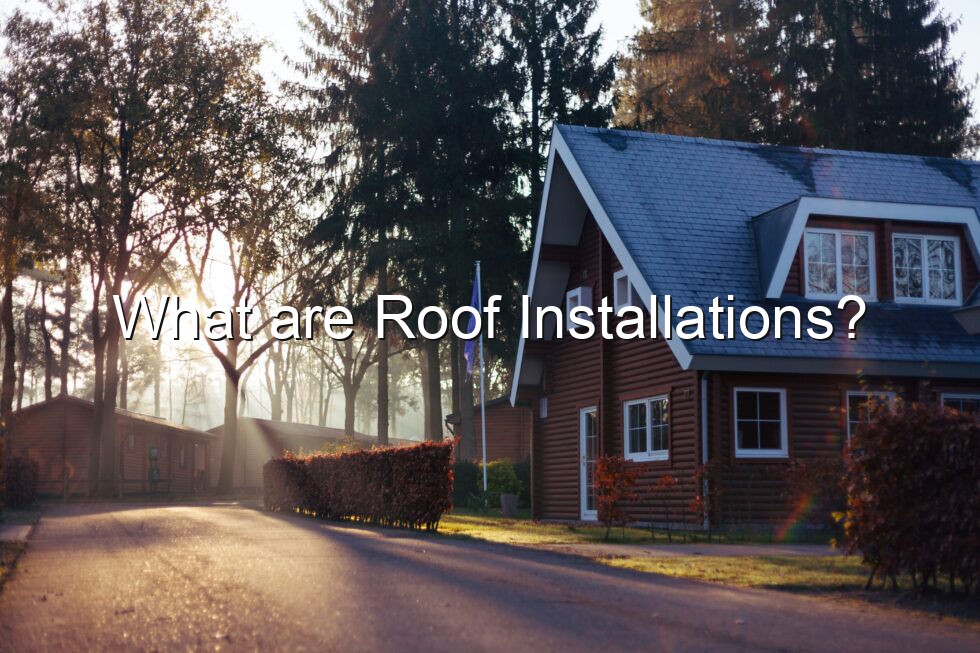Contact us today to ask about our FREE remote Google imaging and/or on-site roofing quotes.
Call us today!
(778) 809-7663
Contact us today to ask about our FREE remote Google imaging and/or on-site roofing quotes.
Call us today!
(778) 809-7663

Roof installation refers to the process of installing a new roof or replacing an existing one. It is a crucial aspect of home construction and maintenance, ensuring the protection and structural integrity of a building. A well-installed roof provides shelter, insulation, and safeguards against weather elements such as rain, snow, wind, and sunlight.
Table of Contents
Roof installation involves a series of meticulous steps that should be carried out by experienced professionals. It requires expertise in various areas, including roofing materials, structural engineering, and compliance with building codes and regulations. Whether you're constructing a new house or replacing an old roof, proper installation is essential for long-term durability and performance.
When it comes to roof installation, hiring licensed roofing contractors is crucial. These professionals have the necessary skills, knowledge, and experience to handle different types of roofs and ensure proper installation. They are well-versed in local building codes and safety regulations, reducing the risk of potential issues or complications.
Professional roof installation guarantees the safety of both the workers and the occupants of the building. Roofing contractors follow safety protocols and use appropriate equipment to minimize accidents or injuries during the installation process. Moreover, they ensure compliance with building codes and regulations, preventing future legal and structural complications.
Proper roof installation involves several sequential steps to ensure a secure and reliable roof structure. Steps are generally similar between roof installations, varying only based on their individual complexity. Let's explore the key steps involved in the process:
Before beginning the installation, a thorough inspection of the existing roof is conducted. This step helps identify any underlying issues, such as leaks, damaged shingles, or structural problems. The inspection helps determine if the roof needs repairs or a complete replacement.
The next step involves selecting the appropriate roofing materials based on factors like climate, budget, and aesthetic preferences. The materials may include asphalt shingles, metal roofing, clay tiles, or other. Once the materials are chosen, they are prepared for installation. This may involve ordering the necessary quantity of roofing materials, coordinating deliveries, and ensuring all tools and equipment are ready for use.
If the existing roof requires replacement, the old roofing materials are carefully removed; Layered shingles take additional care to remove. This step ensures a clean and solid foundation for the new roof installation. Proper disposal of the old materials is essential to maintain a clean and safe work environment.
The underlayment is a vital component of a well-installed roof. It acts as a protective barrier against moisture, ice, and wind-driven rain. The underlayment is laid over the roof decking, providing an extra layer of defense before the shingles are installed.
The installation of roofing shingles is one of the most visible and important steps in the roof installation process. The shingles are carefully aligned and secured to the roof, ensuring proper coverage and protection. Depending on the chosen materials, the installation may involve nailing, stapling, or adhesive application.
Flashing is installed around roof penetrations, such as chimneys, vents, and skylights, to prevent water infiltration. Properly installed flashing ensures a watertight seal and protects vulnerable areas of the roof. Additionally, proper ventilation is essential for maintaining a healthy and long-lasting roof. Adequate ventilation helps regulate temperature, prevent moisture buildup, and prolong the life of the roofing materials.
After the roof installation is complete, a final inspection is conducted to ensure everything has been installed correctly and meets quality standards. The roofing contractor examines the roof for any signs of damage or issues that need to be addressed. Once the inspection is passed, the site is cleaned up, and any debris or leftover materials are removed, leaving the property clean and tidy.
Several factors should be taken into account when planning for roof installation. These factors influence the choice of materials, design considerations, and overall performance of the roof. Some key factors to consider include:
While professional installation is crucial, it's equally important to be aware of common mistakes that can compromise the integrity and performance of the roof. Avoiding these mistakes can save you from future headaches and costly repairs. Here are some common roof installation mistakes to be cautious of:
A well-installed roof exhibits certain characteristics that indicate its quality and longevity. Here are some signs of a well-installed roof:
The cost of roof installation varies depending on factors such as the size of the roof, chosen materials, and the complexity of the project. On average, roof installation costs can range from $5,000 to $15,000 or more.
The duration of roof installation depends on various factors, including the size of the roof, weather conditions, and the complexity of the project. In general, roof installation can take anywhere from a few days to a couple of weeks.
It is possible to install a new roof over an existing one, known as a "roof overlay" or "re-roofing." However, this approach is not suitable for all situations and should be assessed by a professional. It's important to consider factors such as the condition of the existing roof, local building codes, and the weight-bearing capacity of the structure.
Roof installation may be covered by insurance if the roof is being replaced due to damage caused by covered perils, such as storms, fire, or other unforeseen events. It's recommended to review your insurance policy or consult with your insurance provider to understand the coverage details.
While it is technically possible to attempt a roof installation as a DIY project, it is highly recommended to hire a professional roofing contractor. Roof installation requires specialized skills, knowledge, and equipment to ensure a proper and durable result. Professional roofers can provide expert advice, handle complex installation procedures, and guarantee the quality of their work.